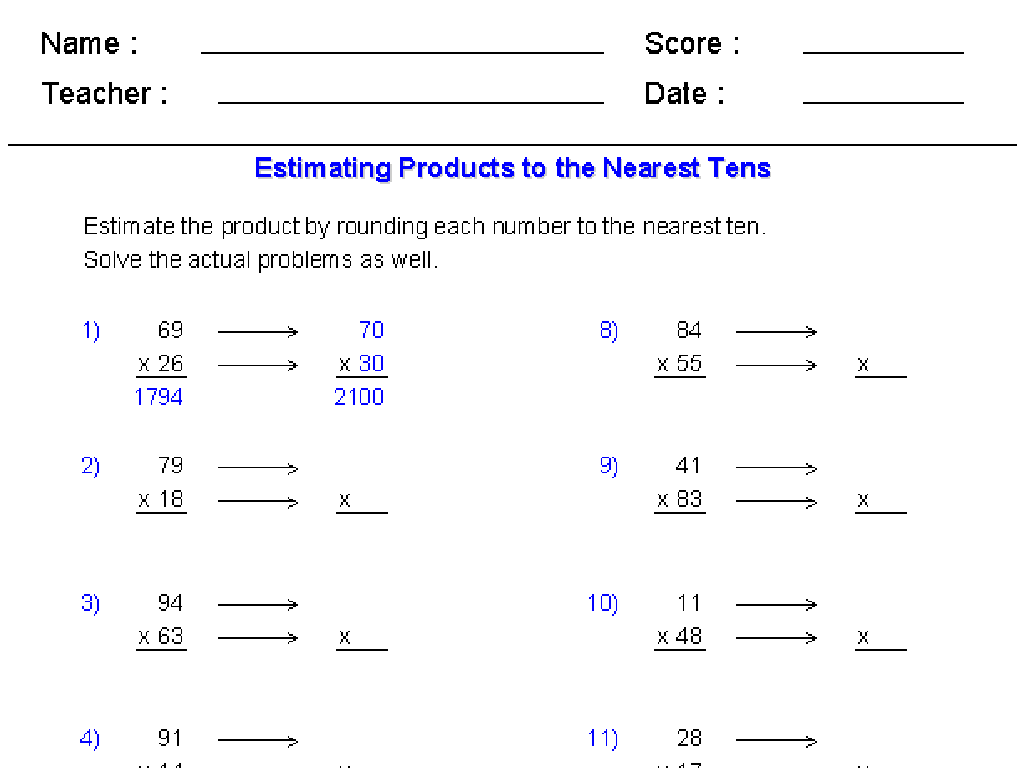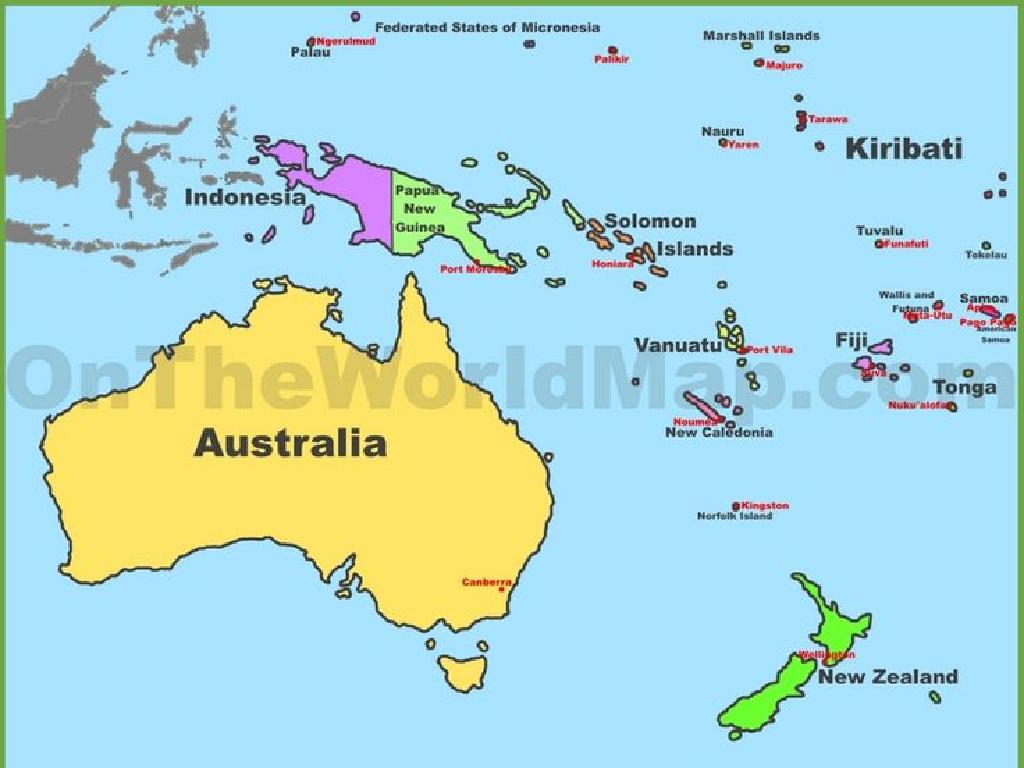Life As A Colonist
Subject: Social studies
Grade: Eighth grade
Topic: Colonial America
Please LOG IN to download the presentation. Access is available to registered users only.
View More Content
Life as a Colonist in Colonial America
– Explore Colonial America
– Who were the colonists?
– Settlers of the 13 colonies from Europe
– Daily life of a colonist
– Farming, chores, community roles
– Challenges faced by colonists
– Harsh weather, disease, food shortages
|
This slide introduces students to the concept of Colonial America and sets the stage for understanding the life of a colonist. Begin with a brief introduction to the period, highlighting the establishment of the 13 colonies. Explain who the colonists were, emphasizing their European origins and motivations for settling in the New World. Discuss the typical daily life of a colonist, including their work, family roles, and social structures. Address the various hardships they faced, such as difficult climates, health issues, and limited resources. This overview provides context for the upcoming detailed exploration of the colonists’ experiences and their impact on American history.
The Thirteen Colonies: Geography’s Role
– Locate the Thirteen Colonies on a map
– Discuss geographical diversity
– Differences in climate, soil, and resources
– Significance of location on life
– Proximity to ports influenced trade and job opportunities
– Impact on economy and culture
– Geography shaped social norms and economic activities
|
This slide aims to help students understand the importance of geography in the development of the Thirteen Colonies. Start by identifying each colony on a map to give students a visual understanding of their locations. Discuss how the geographical differences, such as climate and natural resources, affected the colonies’ economies and cultures. For example, the New England colonies had rocky soil and a colder climate, leading to a focus on fishing and shipbuilding, while the Southern colonies had fertile soil and a warm climate, which was ideal for agriculture and plantations. Emphasize how proximity to ports and natural harbors facilitated trade and influenced the wealth of the colonies. Encourage students to think about how geography can impact their own lives in similar ways.
Daily Life in the Colonies
– Roles in colonial families
– Men managed farms, women handled domestic work, children helped with chores
– Colonial jobs and trades
– Blacksmiths, carpenters, farmers, and merchants were common
– Housing and clothing variations
– Wood houses in the north, brick in the south; clothing was homespun
– Food in the colonies
– Diet varied: corn, beans, and squash in the north; rice and tobacco in the south
|
This slide aims to give students a glimpse into the everyday life of colonial Americans. Discuss the distinct roles and responsibilities within the family unit, emphasizing the division of labor among men, women, and children. Highlight the variety of jobs and trades that were essential to the colonial economy, such as blacksmithing, carpentry, and farming. Explain the regional differences in housing and clothing, influenced by climate and available resources. Lastly, touch on the dietary habits and how they differed between colonies, shaped by the local agriculture and trade. Encourage students to compare and contrast these aspects with modern life to foster a deeper understanding of historical contexts.
Colonial Economy: Trade and Agriculture
– Agriculture as economic foundation
– Farms produced crops like tobacco, which was vital for trade and survival.
– Trade and mercantilism roles
– Colonists traded goods with England and other colonies, adhering to mercantilism policies.
– Currency in the colonies
– Various forms of currency were used, including foreign coins and colonial paper money.
– Barter system utilization
– Bartering was common, with goods or services exchanged without using money.
|
This slide aims to give students an overview of the colonial economy, emphasizing the importance of agriculture, trade, and the systems of currency and barter. Agriculture was the mainstay, with cash crops like tobacco playing a significant role in trade. Mercantilism dictated the flow of goods, favoring the mother country, England. Currency was not standardized, leading to a mix of foreign coins, colonial paper money, and IOUs. Bartering was also a practical solution in the absence of a stable currency. Students should understand how these economic practices shaped colonial life and contributed to the eventual push for independence.
Colonial Education and Literacy
– Significance of colonial education
– Education shaped societal roles and economic opportunities
– Types of colonial schools
– Dame schools for basics, grammar schools for advanced subjects, apprenticeships for trades
– Literacy rates in the colonies
– Literacy varied, higher in New England due to religious reasons
– Educational materials used
– Primers, hornbooks, and the Bible were key educational tools
|
In this slide, we explore the role of education in colonial America, which was crucial for preparing children for their future roles in society. Education varied greatly depending on the region and gender. Dame schools were often the first step for young children, focusing on reading and writing. Grammar schools provided a more advanced curriculum, including Latin and mathematics, preparing boys for college. Apprenticeships were common for boys to learn a trade. Literacy rates were higher in New England, where reading the Bible was important. Educational materials were scarce, with hornbooks and primers being the most common. Discuss the impact of these educational practices on colonial society and how they reflect the values and priorities of the time.
Colonial Government: Forms and Functions
– Various colonial government forms
– Colonies had different forms, including royal, proprietary, and self-governing.
– Town meetings and assemblies
– Town meetings were local decision-making bodies; assemblies were colonial legislatures.
– Colonial laws and rights
– Colonists had English rights, but laws varied across colonies.
– Impact on modern governance
|
This slide aims to give students an overview of the different forms of government that existed in the American colonies and their roles in colonial society. Discuss the three main types of colonial governments: royal (directly controlled by the king), proprietary (controlled by proprietors with royal charters), and charter/self-governing (granted rights to self-rule). Emphasize the importance of town meetings and colonial assemblies as early forms of democracy where colonists could voice their opinions and influence legislation. Highlight the laws and rights that were in place, noting that while colonists retained many rights from English common law, specific laws could vary significantly from one colony to another. Conclude by connecting these colonial governance structures to their influence on the development of the United States government system.
Religion and Beliefs in Colonial Life
– Religion’s role in colonies
– It was central to daily life and community organization.
– Diversity of religious practices
– Colonists practiced various faiths, leading to a mosaic of beliefs.
– Religion shaping communities
– Churches were social hubs and influenced community norms.
– Influence on laws and governance
– Religious morals were often the basis for colonial laws.
|
This slide aims to explore the significant influence of religion on the lives of colonists. Religion was not just a private matter but a cornerstone of colonial society, affecting social structure and community cohesion. The colonies were home to a range of religious practices, reflecting the diverse origins of the settlers. This diversity sometimes led to tolerance and at other times to conflict. The local church often served as a meeting place and played a key role in establishing community regulations. Moreover, many colonies had laws that were directly influenced by religious doctrine, which students can see reflected in historical documents from the period. Encourage students to consider how these religious influences compare to the role of religion in society today.
Challenges Faced by Colonists
– Hardships: disease, climate, conflict
– Smallpox, harsh winters, and territorial disputes
– Relations with Native Americans
– Trade, aid, but also tension and conflict
– Struggle for resources
– Competition for land, food, and water
– Survival tactics
– Adaptation, community support, and resilience
|
This slide aims to highlight the various adversities colonists faced in the New World. Diseases like smallpox were rampant and often deadly due to lack of immunity. The climate varied greatly across colonies, with harsh winters in the north causing additional strain. Conflicts arose not only with Native American tribes over land and resources but also among European powers. The relationship with Native Americans was complex, involving trade and aid but also marked by tension and violence. Colonists struggled to secure basic necessities such as land, food, and water, leading to competition and sometimes conflict. Survival required adaptation to the new environment, reliance on community support, and a great deal of resilience. Encourage students to consider how these challenges shaped the development of colonial society and the individual experiences of colonists.
Class Activity: Living History Role-Play
– Assume a colonist’s role
– Describe daily life and hardships
– Consider tasks, social interactions, and resources available
– Compare past and present living
– Reflect on technology, comforts, and rights we have now
– Engage in group discussion
|
This activity is designed to immerse students in the life of a colonist through role-play. Assign each student a specific role, possibly including farmers, blacksmiths, housewives, or children. They should research and then present the daily routines, responsibilities, and challenges faced by their character. After presentations, lead a discussion on the stark differences between colonial life and modern life, focusing on technological advancements, societal changes, and how our daily challenges differ from those of the colonists. Encourage students to think critically about the conveniences of modern life and the resilience of the colonists. This activity will help students appreciate history and understand the evolution of society.






